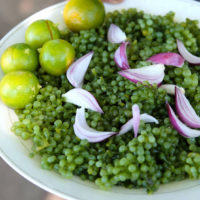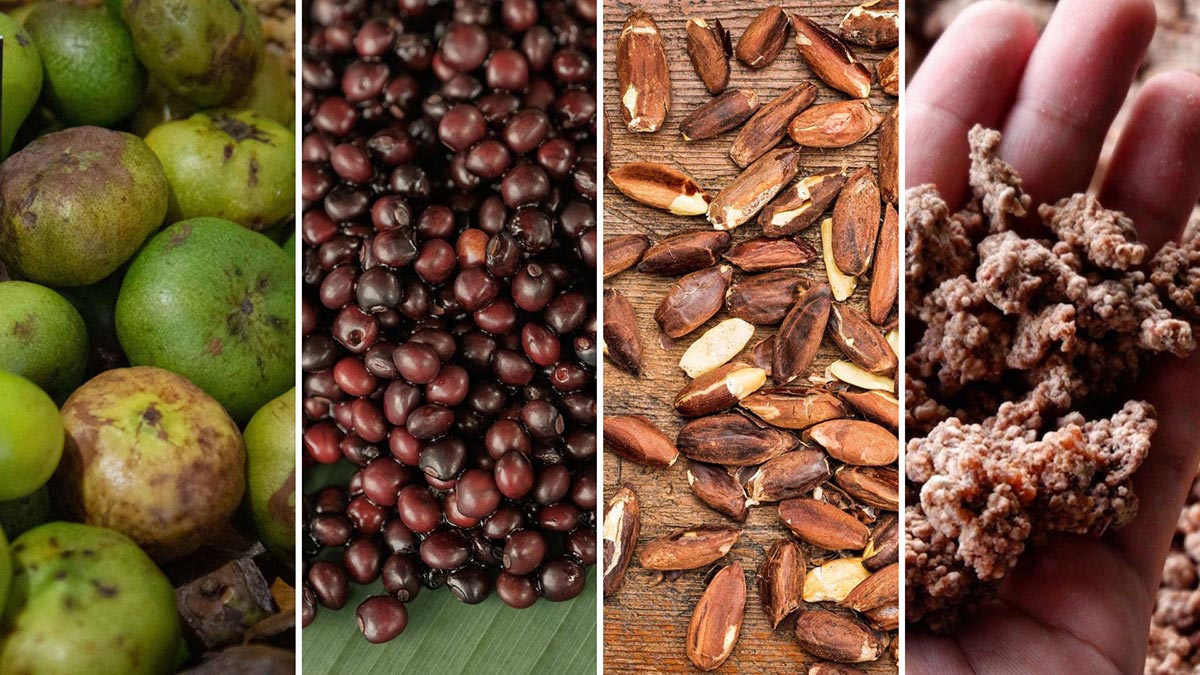
Food is one of the most defining parts of the Philippine culture. From cooking practices like naming the dishes after the method they were cooked to distinct flavors like ube, the Philippines has made a mark in the world with its rich food culture and history. However, due to the increasing modernization, many native ingredients in the Philippines are becoming endangered.
In The Ark of Taste, a catalog of endangered heritage foods by the global Slow Food movement, over 60 ingredients in the Philippines face extinction. This catalog aims to preserve these foods by promoting their growth and cultivation, encouraging their consumption as these ingredients are sustainable and help biodiversity.
We featured a select few of them, but the complete list is available in the Ark catalog on the Slow Food Foundation for Biodiversity website.
Asin Tibuok

Asin Tibuok is native to Bohol, one of the provinces in the Philippines known for salt production. Asin Tibuok is known to have a sharp taste with smoky and fruity undertones. Locals can easily recognize it as the salt shaped like a giant dinosaur egg.
Although very useful, producing Asin Tibuok can be long and tedious. The production involves coconut husks soaked in unique pits filled with seawater for several months. Because of the process, many salt farmers have stopped making them. These salt-makers or asinderos were once significant professions in Philippine society, but the craft has become nearly extinct today.
Batwan
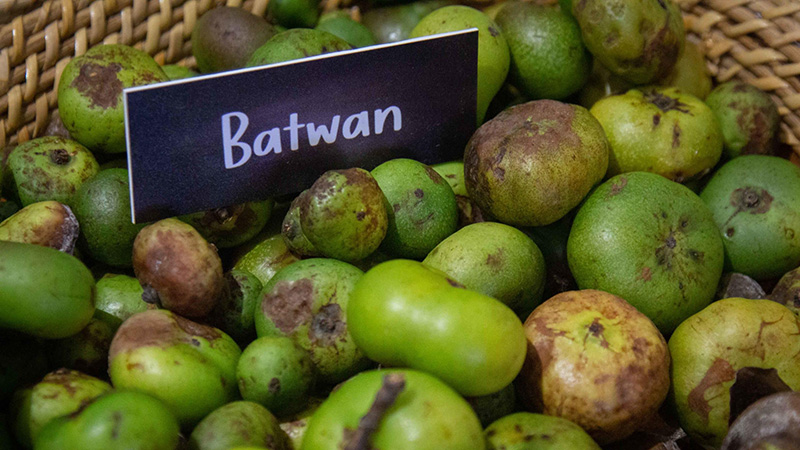
Binukaw or batwan belongs to the genus Garcinia of the family Clusiaceae. The plant used to be widespread in parts of the country, with different regions calling it other names. Its most common name, batwan, is the name it is referred to in Visayan provinces. In Benguet, it is called ballok, balikot in Ilocos, and binucao or bulicao in the Tagalog provinces.
Batwan is a round fruit with a distinctive sour flavor, making it perfect for soups and stews. It’s a common ingredient in Ilonggo cuisine, visible in traditional sour dishes. The sour fruits can also be eaten raw.
The species is now endangered due to illegal logging and deforestation for agriculture.
Related Article: 10 Must-Try Filipino Dishes
Kadyos
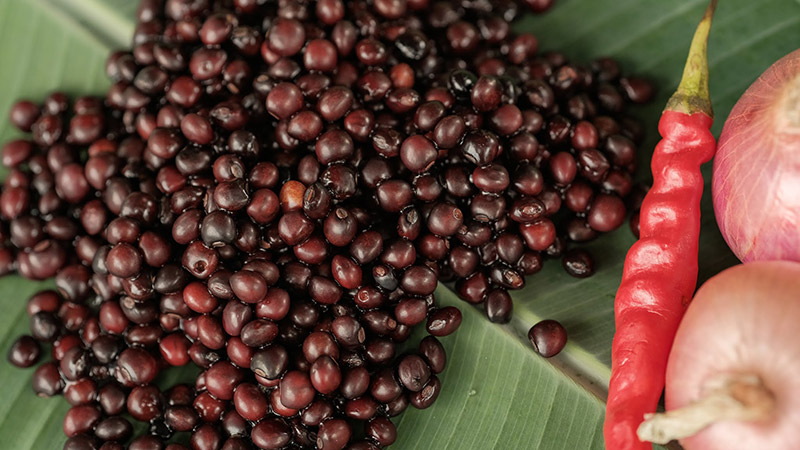
Kadyos comes from a shrub called the pigeon pea, which grows on the islands of Panay and Negros. They are legumes, used as ingredients in famous Ilonggo dishes like the KLB, a mix of Kadyos, Baboy or pork, and Langka or jackfruit. They are known to resemble black beans but with a nutty flavor and rich in nutrients.
Outside cuisine, it can also be used as livestock feed or grown alongside other crops, suppressing weeds and enriching soil nitrogen. Because of climate change, however, the planting season has become erratic, threatening those seeds and future crops.
Katmon

The Katmon tree is endemic to the Philippines. Locals use their fruits to make sauces, jams, and flavorings. Additionally, the acid from the fruit is used to create a traditional cure for cough.
The tree grows to about 10-15 meters and has unfortunately been logged and harvested, degrading the ecosystem and threatening katmon.
Related Article: 12 Filipino Dishes Every Health Buff Needs To Try
Landang
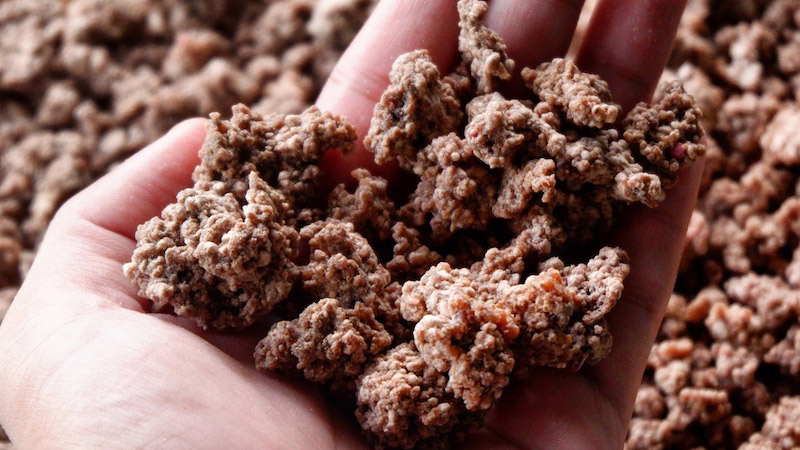
Landang or native tapioca is made from palm flour that comes from the trunk of buri palm, a native palm tree variety. Unlike the typical sago, landang has a lumpier texture. It is often used in traditional Visayan dishes like binignit, kinugay, or vegetable stew.
Production of landang takes about five to seven days. The process is similar to making sago and requires several pounding rounds before mixing with water. The production of landang has unfortunately been significantly reduced as trees are cut to develop malls and subdivisions in the region.
Pili
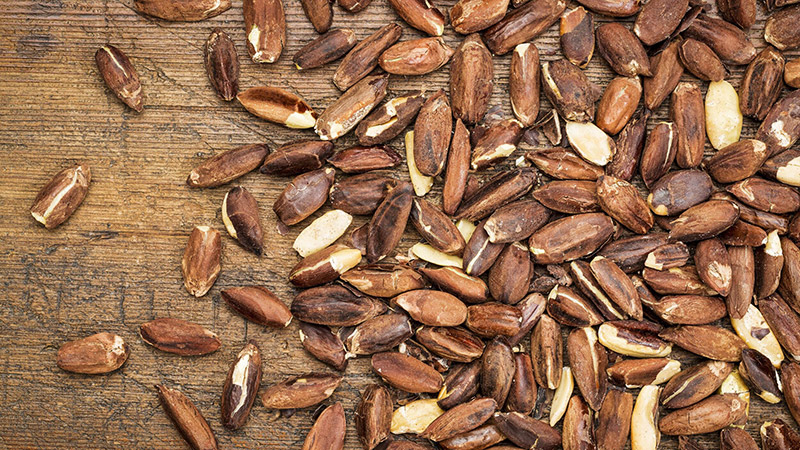
Pili or Canarium ovatum is a tropical tree species native to the Philippines. These trees are mainly found in Bicol and produce Pili nuts or fruits known for their sturdy, oblong shape. The shoots are often used in salads, while the pulp is eaten after it is boiled or roasted. Boiled Pili pulp resembles the sweet potato in texture and has become one of the most popular sweet delicacies in the Philippines.
Despite this popularity, however, Pili is listed as an endangered species due again to reforestations.
Tabon-tabon
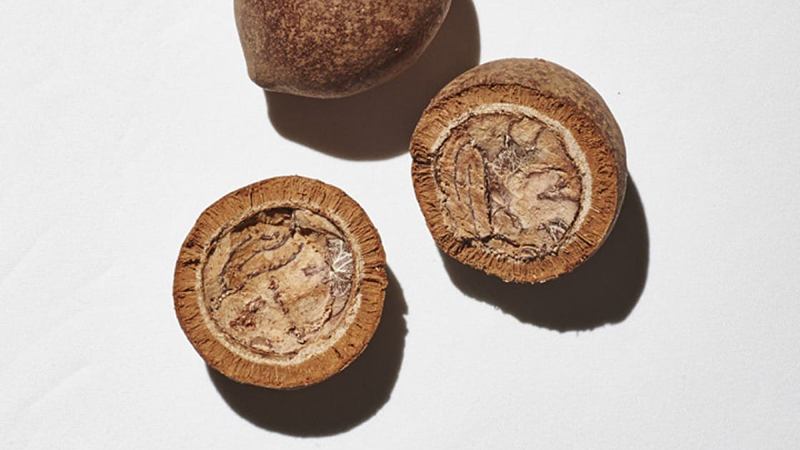
Tabon-tabon or Hydrophytune Orbiculatum is another tropical tree native to the Philippines. Its fruit resembles chico, and its sap is a primary ingredient in Kinilaw, a popular seafood dish in the country. The juice from the grated flesh of the fruit helps neutralize the smell and flavor of raw fish and the acidity of the vinegar.
However, the tree is also one of the endangered species.
–
These native ingredients serve valuable benefits and functions and have cultural importance in the country, especially in the regions where they are found. Knowing about and protecting them is crucial to preserving practices and culture for future generations.




